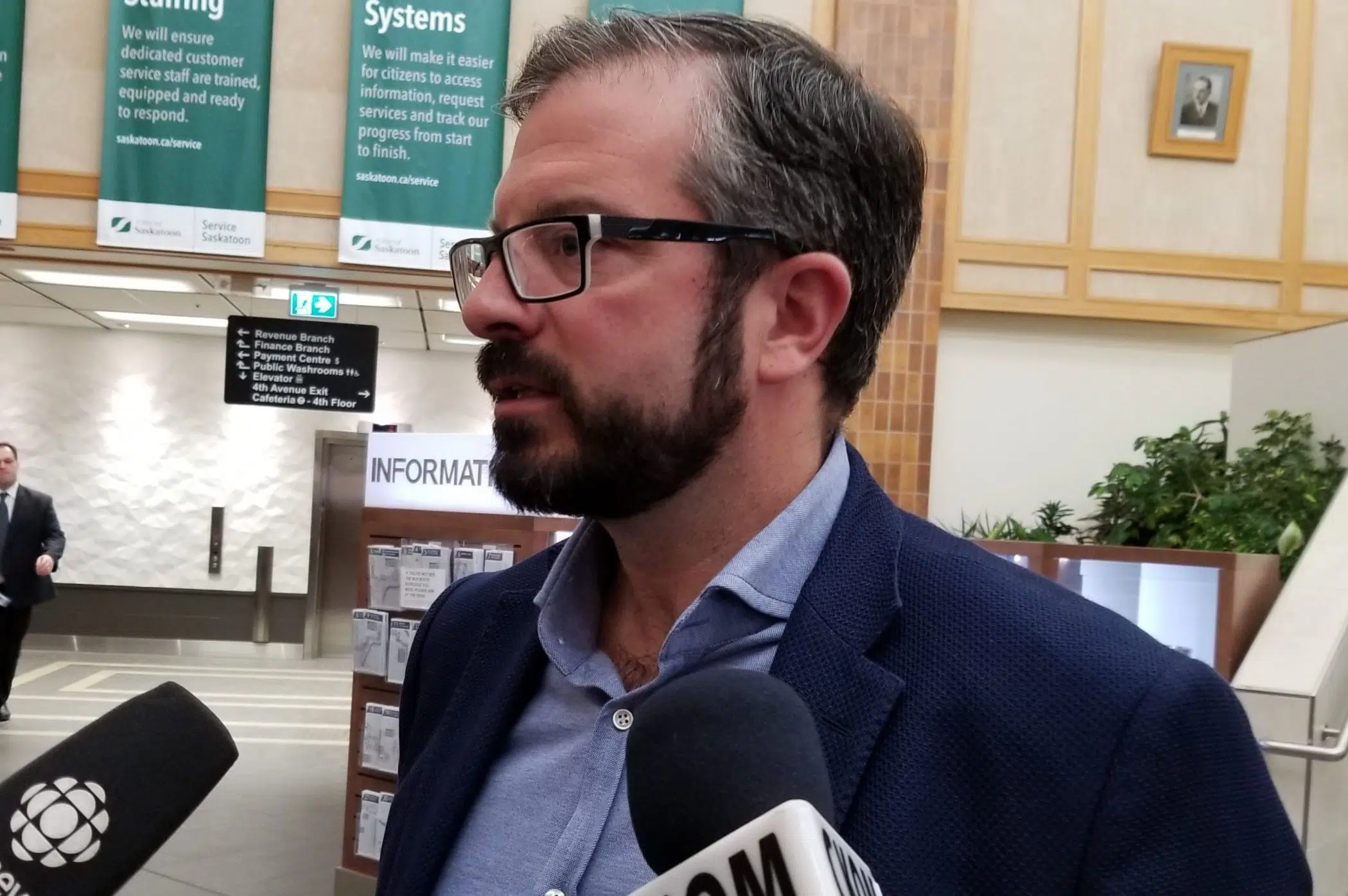Saskatoon city council is being asked to weigh a potentially groundbreaking proposal for a sustainable community against long-established guidelines for planning both within the city limits and in conjunction with the Rural Municipality of Corman Park.
Arbutus Properties president Jeff Drexel spoke Monday at a meeting of the city’s planning, development and community services committee.
In his remarks, he called on the city to allow the company to go ahead with getting its Solair development built within five years, despite it not currently fitting in with the schedule planned for the Holmwood area, located east of Rosewood.
“We’re just asking for it to jump the queue. We’re not asking for it to do something different, other than to add to some sustainable elements. We’re just saying, ‘Let’s build this now, not 15 years from now,’ ” Drexell told reporters after the committee finished voting.
Solair would comprise homes built with solar panels providing electricity for the entire community and generating a surplus to sell back into the grid. It would also feature a system of rain gardens — green spaces with plants and shrubs built into depressions in order to hold stormwater in lieu of traditional storm sewers.
Drexel said it would be a level of innovation not seen anywhere in North America.
“I think we have a long way to go to improving how we do development and I think this takes a significant step in the right direction — in fact, a giant leap really,” he said. “And that’s why we think this should jump the queue and should be put ahead of everyone else.”
He added that going ahead with Solair would fill in the gap between the current Brighton neighbourhood and the Arbutus-built Costco in Rosewood. He noted that, as it stands, the gravel roads in the area are seeing a lot of traffic through the undeveloped area.
“We felt that this made a lot of sense to develop in between them and continue that development so people didn’t have to drive across the gravel roads in order to get to Costco,” he said.
Drexel also noted some of the features planned for Solair could be incorporated into other Arbutus developments in the city, but that the scale of Solair was what would make it economical. As a neighbourhood planned for several thousand people, Drexel said Solair would allow the company to purchase things like solar panels at better prices, enabling it to keep homes in the development starting at around $349,000 — the same as homes in Rosewood.
Administration calls for development to wait its turn
City administration raised a number of issues with the proposal.
In his remarks to the committee, Saskatoon city manager Jeff Jorgenson said it was best to plan developments at the sector level first, then move to neighbourhoods and then to portions of neighbourhoods.
Solair was originally viewed as part of Rosewood, but both the city and Arbutus agreed it makes more sense as part of the Holmwood sector as it would be separated from Rosewood by the CP rail tracks in the area.
But amending the Holmwood plan to include Solair will take time, and Jorgenson said that proceeding ahead of other neighbourhoods could create a host of problems.
“If you approve Solair, it defines the roadway connections for all the land around it,” Jorgenson said.
He also pointed to potential issues around drainage, transit and sewer connections.
Administration also cited a long-held rule of holding development to one neighbourhood at a time per sector. Under the policy, a neighbourhood must be around 70-per-cent built before the next one can start. This prevents having city services stretched thin between partially built communities and prevents situations where residents could be surrounded by construction for decades.
Jorgenson also noted concerns around how the city works with its regional partners.
Most of the land for Solair is currently within the RM of Corman Park, but because it sits within the boundary of the province’s planned Saskatoon freeway bypass, it is slated for eventual annexation.
However, Jorgenson stressed the “eventual,” noting that Saskatoon currently has enough land within its boundaries to accommodate growth to 500,000 people. He suggested that moving early on Solair could create friction with Corman Park and potentially complicate a number of other ongoing discussions.
The members of the committee voted to send administration’s report on Solair on to the RM of Corman Park, the Saskatoon Environmental Advisory Committee and the Saskatoon North Partnership for Growth (P4G) for feedback.
The committee also advised that the issue be taken up by a full meeting of city council to get input from Ward 8 Coun. Sarina Gersher, who represents the area, and from Ward 5 Coun. Randy Donauer, who represents Saskatoon at P4G. That body is a regional planning forum that includes representatives from Saskatoon, Corman Park, the City of Martensville, the City of Warman and the Town of Osler.







